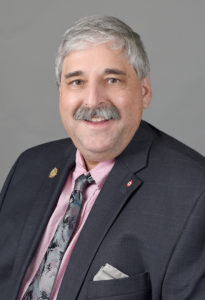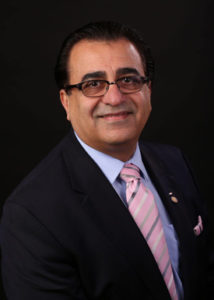
Normal functional movement of the mandibular condyle and the articular disc during the full range of opening and closing.
When the American Academy of Orofacial Pain (AAOP) was founded in 1975, it marked the first major achievement in the journey toward organized recognition of the management of orofacial pain, including temporomandibular disorders (TMDs), by the field of dentistry. Over the past 43 years, this branch of study has grown by leaps and bounds, and its progress is perhaps best measured by the evolution of the AAOP Guidelines, a publication that is now in its sixth edition titled Orofacial Pain: Guidelines for Assessment, Diagnosis, and Management. From its inception in 1990 to the latest release in 2018, each edition marks important milestones in the progress and development regarding the assessment, diagnosis, and management of orofacial pain in dentistry.
Broadening Our Perspective
When the AAOP Guidelines was first published as Craniomandibular Disorders: Guidelines for Evaluation, Diagnosis, and Management, the focus among dental pain-management professionals centered on TMDs. However, as researchers uncovered more evidence regarding the processes behind and related to TMDs, the field of study began to encompass much more than the temporomandibular joint.
“The field of orofacial pain has evolved tremendously over the past 30 years,” begins Ghabi A. Kaspo, DDS, President of the AAOP. “More recently, we have seen how genetic, epigenetic, psychosocial, and other biologic markers have proven to be vital to orofacial pain development and management. This also applies to the effect sleep has on patients with orofacial pain and vice versa, resulting in a bidirectional relationship.”
“The field also became more cognizant of other conditions within the spectrum of orofacial pain,” explains Reny de Leeuw, DDS, PhD, MPH; editor of the fourth, fifth, and sixth editions of the AAOP Guidelines, “including cervical pain disorders, headache disorders, and neuropathic pain conditions. Recognizing many of these conditions shifted the arena of pain management closer to the medical field, as many of the above conditions are treated with behavioral and pharmacologic means as well.”
Even as the field broadened its purview, professional opinions on the management of TMDs—the foundation of the field—evolved. As the medical community as a whole began making its shift toward evidence-based practice in the 1990s, the dental community began to change the way it managed TMDs.
“With regard to TMDs,” Dr de Leeuw continues, “there have been many changes in the field of management and professional acceptance. Early treatments focused on occlusion and the position of the articular disc in relationship to the mandibular condyle. This resulted in many aggressive and irreversible treatments, including extensive occlusal adjustments, nonsurgical disc repositioning techniques followed by extensive orthodontic or prosthodontic treatments, and surgical disc repositioning, replacement, or removal techniques. However, recently treatment has shifted based on evidence from research to more conservative treatments that focus on reducing pain and discomfort and increasing function by means of behavioral, pharmacologic, and physical therapies and oral appliance treatments, and less emphasis is placed on the position of the articular disc.”
Expanding Access to Treatment
In 2009, a huge step toward the recognition of orofacial pain as a discipline in dentistry was taken when the Commission on Dental Accreditation (CODA) approved orofacial pain as an area of advanced education. Soon after, several education programs cropped up where clinicians could gain enhanced knowledge in the management of orofacial pain.
“These days, there are several CODA-accredited orofacial pain training programs throughout the country where interested dentists can obtain a thorough and solid education in the field of orofacial pain,” explains Gary D. Klasser, DMD, coeditor of the AAOP Guidelines.
The sticking point is that most dentists will encounter patients with symptoms of orofacial pain and may not be adequately equipped to manage those symptoms and reach an appropriate diagnosis. The sixth edition of the AAOP Guidelines cites a study of 45,711 American households, which reported that nearly 22% of the general population had experienced at least one of five types of orofacial pain in the past 6 months. While toothache, the most common type of orofacial pain reported by the study participants at 12.2%, may be standard fodder for general dentists, TMJ pain was reported by 5.3% of participants, and face or cheek pain was reported by 1.4%. Further complicating the matter is the fact that orofacial pain seldom appears to be an isolated complaint, but few patients mention additional pain sources. Commonly identified comorbid conditions include fibromyalgia, myalgic encephalomyelitis/chronic fatigue syndrome, panic disorder, gastroesophageal reflux disorder, irritable bowel syndrome, multiple chemical sensitivity, and posttraumatic stress disorder. Symptoms and identification of these conditions can differentiate orofacial pain patients from those seeking routine dental care.
“One of the main existing challenges,” Dr Klasser explains, “is that dentists are not adequately educated during their predoctoral years to effectively diagnose and treat this enigmatic and unique patient population. In a study conducted across North America to determine the state of education regarding TMDs at the predoctoral level, it was reported that there was a lack of standardized qualitative and quantitative curricula regarding this subject. Therefore, recent graduates effectively complete their formal education being confused or poorly informed regarding orofacial pain.”
Dr Kaspo chimes in: “Other challenges include the fact that orofacial pain conditions are medical conditions and should be billed and coded as such. The general dentist is not prepared and often not equipped or knowledgeable enough to do so. However, if a dentist is interested in getting involved with facial pain, it is imperative that he or she become familiar with the medical billing process using the proper ICD-10 and Current Procedural Terminology (CPT) codes.”
Leading the Way
While there are still many challenges to overcome before orofacial management becomes widespread and mainstream, dedicated orofacial pain practitioners—including the members of the AAOP—continue to drive the field forward.
“Over the past 42 years, membership of the AAOP has developed from a small group of dentists with an interest in managing patients suffering from TMD symptoms to a larger group focused on the discipline of complex chronic orofacial pain disorders,” Dr Kaspo states. “While the AAOP was primarily founded by and for dentists, it is open to all healthcare providers interested in the management of orofacial pain and TMDs. Most of our members are dentists; however, our current membership also includes physical therapists, psychologists, researchers, and medical doctors.
“Certain specialties,” Dr Kaspo continues, “require a particular group of people with particular interests. Orofacial pain is a field where you will find some truly special dentists with a special interest in learning about and treating chronic facial pain. They listen to the patient population and use analytic and critical thinking skills to evaluate, diagnose, and manage these patients effectively.”
The biggest barrier for non–orofacial pain practitioners in managing these patients is time, Dr de Leeuw emphasizes. “Diagnosing and managing TMDs and other orofacial pain conditions is very time-consuming and challenging when done correctly. The second barrier is having a profound knowledge of orofacial pain conditions and being able to recognize pains from nonodontogenic sources. We can contrast this with a similarly holistic complaint that patients often present with: sleep apnea. The dental community likely has been faster to accept treating patients with sleep apnea because the diagnosis process is faster and more straightforward, and it is also more financially viable than managing patients with orofacial pain. Treating sleep apnea is also generally more rewarding—meaning that patients with moderate sleep apnea generally will respond well to treatment. Chronic facial pain, on the other hand, can be very refractory to management options.”
This is where the AAOP Guidelines comes in. While not an all-encompassing textbook on the complete aspects of orofacial pain, the AAOP Guidelines functions as exactly that: guidance for any clinicians who find themselves confronted with a patient with orofacial pain. The book accomplishes two important goals: (1) filling in the holes in a clinician’s knowledge and (2) highlighting the areas where the clinician should seek consultation.
In the book, the authors state, “It is every clinician’s responsibility to remain unbiased during evaluation and differential diagnosis. Orofacial complaints involve diverse, complex physiologic interrelationships, and all clinicians must be able to judge when their diagnostic acumen requires consultation; otherwise, treatment may not target the appropriate source.”
When asked how this responsibility plays out in clinical practice, Dr de Leeuw provides an analogy. “If a dentist does not have knowledge of orofacial pain conditions, including TMDs and toothaches of nonodontogenic origins, he or she will not be able to correctly diagnose these conditions and will subsequently perform inappropriate or misdirected treatments—or may provide no treatment at all. These situations will lead to dissatisfaction of both the dentist and the patient. The ability to correctly diagnose orofacial pain conditions depends not only on the factual knowledge of the dentist but also on other cognitive factors such as data gathering, clinical reasoning, and considering the full spectrum of diagnoses. The AAOP Guidelines assists with all of these clinical necessities.”

Example of screening questions for TMDs. All dental patients should be screened for TMDs and other orofacial pain disorders.
Keeping Pace and Moving Forward
The AAOP Guidelines is just one of the tools available to clinicians interested in managing orofacial pain.
“Other avenues for further education include evidence-based continuing education courses,” Dr de Leeuw says, “such as those provided at the annual scientific meeting of the AAOP; through the AAOP newsletter, where recent publications and publications of interest are highlighted; and through peer-reviewed journals such as the Journal of Oral & Facial Pain and Headache (the official journal of the AAOP and several sister organizations).”
“Ideally, orofacial pain topics will be integrated into dental predoctoral and graduate curricula,” Dr Klasser adds.
But for any clinician or student interested in or already managing orofacial pain, the AAOP Guidelines will remain one of the most valuable treatment tools.
“The field of orofacial pain is rapidly expanding,” Dr Klasser explains. “Just in the last 5 years since the previous edition, there has been an explosion of scientific knowledge with regard to the genetics and epigenetics as well as neuronal mechanisms of chronic pain. In addition, new therapeutic uses for existing drugs, such as the use of botulinum toxin for neuropathic pain disorders and cannabinoids for the use of chronic pain in general, are currently being investigated.”
“Furthermore,” Dr de Leeuw states, “our understanding of the relationship between sleep disorders and chronic pain as well as between psychologic disorders and chronic pain is progressively advancing. The pace of research and emerging evidence makes it important to update the AAOP Guidelines on a regular basis to ensure that clinicians are kept abreast of the latest burgeoning knowledge as well as the current mandates for management protocols.”
This book will no doubt serve to update clinicians as to the current state of the field as well as propel the field forward by improving their ability to manage orofacial pain in their own practices.
 Reny de Leeuw, DDS, PhD, MPH, is Professor and Associate Dean for Academic Affairs of the Department of Orofacial Pain of the University of Kentucky College of Dentistry. She received both her DDS and PhD from RijksUniversiteit Groningen, The Netherlands, before completing an MPH and a residency in orofacial pain at the University of Kentucky. Her research interests include orofacial pain, temporomandibular disorders, posttraumatic stress disorder, and functional brain imaging. She is a fellow of the American Academy of Orofacial Pain and a diplomate of the American Board of Orofacial Pain, as well as editor of the fourth, fifth, and sixth editions of Orofacial Pain: Guidelines for Assessment, Diagnosis, and Management (Quintessence, 2018).
Reny de Leeuw, DDS, PhD, MPH, is Professor and Associate Dean for Academic Affairs of the Department of Orofacial Pain of the University of Kentucky College of Dentistry. She received both her DDS and PhD from RijksUniversiteit Groningen, The Netherlands, before completing an MPH and a residency in orofacial pain at the University of Kentucky. Her research interests include orofacial pain, temporomandibular disorders, posttraumatic stress disorder, and functional brain imaging. She is a fellow of the American Academy of Orofacial Pain and a diplomate of the American Board of Orofacial Pain, as well as editor of the fourth, fifth, and sixth editions of Orofacial Pain: Guidelines for Assessment, Diagnosis, and Management (Quintessence, 2018).
 Gary D. Klasser, DMD, is Professor in the Division of Diagnostic Sciences at the Louisiana State University School of Dentistry in New Orleans. He obtained his dental degree from the University of Manitoba, Canada, in 1980. He then practiced general dentistry for the next 22 years before returning to graduate studies. In 2004, he received his certificate in orofacial pain from the University of Kentucky College of Dentistry. In 2005, he completed a fellowship in oral medicine/oral oncology at the University of Illinois at Chicago (UIC) College of Dentistry, where he served as Assistant Professor and Director of the oral medicine/orofacial pain clinic until 2011. Dr Klasser has published in a number of peer-reviewed journals, contributed chapters to various textbooks, and served as an editorial reviewer for a number journals. He is Council Chair for the American Academy of Orofacial Pain and coeditor of Orofacial Pain: Guidelines for Assessment, Diagnosis, and Management (Quintessence, 2018).
Gary D. Klasser, DMD, is Professor in the Division of Diagnostic Sciences at the Louisiana State University School of Dentistry in New Orleans. He obtained his dental degree from the University of Manitoba, Canada, in 1980. He then practiced general dentistry for the next 22 years before returning to graduate studies. In 2004, he received his certificate in orofacial pain from the University of Kentucky College of Dentistry. In 2005, he completed a fellowship in oral medicine/oral oncology at the University of Illinois at Chicago (UIC) College of Dentistry, where he served as Assistant Professor and Director of the oral medicine/orofacial pain clinic until 2011. Dr Klasser has published in a number of peer-reviewed journals, contributed chapters to various textbooks, and served as an editorial reviewer for a number journals. He is Council Chair for the American Academy of Orofacial Pain and coeditor of Orofacial Pain: Guidelines for Assessment, Diagnosis, and Management (Quintessence, 2018).
 Ghabi Kaspo, DDS, has been practicing dentistry, primarily in the field of orofacial pain management, for the past 17 years. He received his dental degree and diploma in orthodontics from Damascus University in Syria and a second DDS from the University of Detroit Mercy in Michigan. He completed his certificate in orofacial pain management at the University of Medicine and Dentistry of New Jersey in Newark. He is a diplomate of the American Board of Orofacial Pain and of the American Board of Dental Sleep Medicine and is current President of the American Academy of Orofacial Pain. He has published numerous articles on topics such as temporomandibular imaging, fibromyalgia and sleep disorders in TMD patients, and headache. He maintains a private practice limited to orofacial pain management with locations in both Troy and Bingham Farms, Michigan.
Ghabi Kaspo, DDS, has been practicing dentistry, primarily in the field of orofacial pain management, for the past 17 years. He received his dental degree and diploma in orthodontics from Damascus University in Syria and a second DDS from the University of Detroit Mercy in Michigan. He completed his certificate in orofacial pain management at the University of Medicine and Dentistry of New Jersey in Newark. He is a diplomate of the American Board of Orofacial Pain and of the American Board of Dental Sleep Medicine and is current President of the American Academy of Orofacial Pain. He has published numerous articles on topics such as temporomandibular imaging, fibromyalgia and sleep disorders in TMD patients, and headache. He maintains a private practice limited to orofacial pain management with locations in both Troy and Bingham Farms, Michigan.
 Orofacial Pain: Guidelines for Assessment, Diagnosis, and Management
Orofacial Pain: Guidelines for Assessment, Diagnosis, and Management
American Academy of Orofacial Pain
Edited by Reny de Leeuw, Gary D. Klasser
Following in the tradition of the previous editions, this book offers the latest research and most up-to-date information on orofacial pain, including a concise overview of each condition as well as its symptoms, comorbidities, differential diagnosis, and treatment options. Every chapter has undergone critical updates to reflect the developments in the expanding field of orofacial pain, including the glossary. These updates include the addition of new diseases such as first-bite syndrome, revised information on genetic factors to reflect new insights gleaned from the OPPERA studies, expanded information on management strategies for certain conditions, and revisions to screening tools for biobehavioral factors. In addition, the classification system used in the fifth edition has been replaced and extended and includes DSM-5 codes where applicable. This book remains an essential tool for any health care provider who treats patients with orofacial pain.
336 pp (softcover); 9 illus; ©2018; ISBN 978-0-86715-768-0 (B7680); US $56



Pingback: Quintessence Roundup: June | Quintessence Publishing Blog